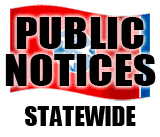By MIKE VINSON
A few weeks backs back, I wrote that the graphic violence depicted in the 1967 gangster movie Bonnie and Clyde (starring Warren Beatty and Faye Dunaway) “flipped a bird” to the old, conservative Hollywood and, thus, “opened the door” to a new generation of more liberal, more adventurous filmmakers.
As of the late ‘60s, actor Peter Fonda (son of actor Henry Fonda, brother of actress Jane Fonda) was the “John Wayne of biker flicks,” having established himself in films such as the Wild Angels (1966).
As research has it, here’s how the highly successful, ultimate biker film Easy Rider—reaching a near-cult status that exists until this very day—came to be:
Already indoctrinated to biker-themed films, Peter Fonda is reported to have had a creative brain surge along the lines of: Suddenly I thought that’s it, that’s the modern Western; two cats just riding across the country . . . and maybe they make a big score, see, so they have a lot of money. And they’re gonna cross the country and go retire to Florida . . . when a couple of duck poachers in a truck ‘off’ them because they don’t like the way they look.
Further, it has been written that Peter Fonda called fellow actor and friend Dennis Hopper at 1:30 in the morning with the Easy Rider idea, and Hopper immediately came on board.
What we know for a fact is this: Starring Peter Fonda and Hollywood wild man Dennis Hopper, Easy Rider was released mid-July 1969, and, for the most part, the movie’s story line matches Peter Fonda’s supposed “creative brain surge.”
The two main characters are nomadic bikers “Wyatt,” portrayed by Fonda, and “Billy,” portrayed by Hopper. After making some serious cash on a drug deal, Wyatt and Billy set out across the country, their bikes rumbling down the highway to rock group Steppenwolf’s tunes “The Pusher” and “Born to be Wild.” (NOTE: Supposedly, Wyatt’s character was based on famous Old West lawman Wyatt Earp, and Billy’s character was based on infamous Old West outlaw Billy the Kid.)
Headed for the Mardi Gras in New Orleans, Wyatt and Billy, along the way, hang out out at a hippie commune, meet American Civil Liberties Union lawyer and local drunk George Hanson (portrayed by Jack Nicholson, nonetheless), and take the hapless, no-direction-known Hanson with them. Before reaching New Orleans, though, Hanson is beaten to death by some farmers in a field. Wyatt and Billy, however, do make it to the Mardi Gras, get with a couple hookers, and drop some LSD. Having biked their way down to Florida, two rednecks in a pickup truck pull up alongside Wyatt and Billy, on bikes, and comment about their long hair. Billy flips them a bird, and the redneck, riding passenger, “offs” both Wyatt and Billy with a shotgun.
Easy Rider was a ground-breaking story about man’s quest for freedom, and, too, the consequences that sometimes come with the quest for certain freedoms. It seemed to embed itself in the American psyche.
For me, in terms of personal freedom, the release of Easy Rider in theaters across America was the quintessential precursor to the rock festival of all rock festivals, Woodstock, which took place August 15-17, 1969, in White lake, New York. Though somewhat hedonistic, Woodstock, arguably, was the loudest and most expressive display of freedom in American history. Ironically—though fittingly—musician Richie Havens opened the Woodstock concert with the song “Freedom.”
However, a week prior to Woodstock, August 8, 1969, followers under the spell of cult leader Charles Manson—the embodiment of evil—brutally murdered actress Sharon Tate, Abigail Folger, Wojciech Frykowsk, and Steven Parent in a posh Hollywood neighborhood. It no longer was safe for even the rich & famous. The age of true freedom was gone, and the “Age of Aquarius” was upon us.
Indeed, summer 1969 proved to be a significantly pivotal time for America, because, far as I’m concerned, things haven’t been quite the same since.






